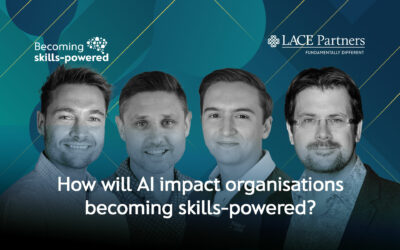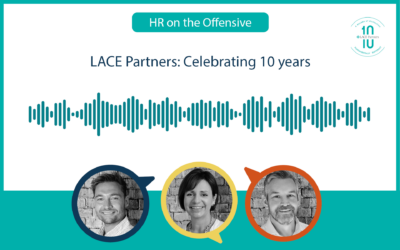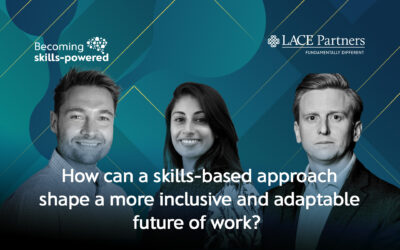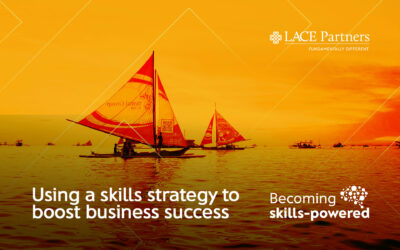Should organisations look to commit to a single end-to-end ‘enterprise’ platform or hand pick a selection of the latest ‘best of breed’ bleeding edge vertical technologies from across the employee life cycle? Should you commit to one approach or is there a middle ground, where you can have your cake and eat it too?
Having an HRIS landscape comprised of ‘best of breed’ vertical products theoretically provides you with agility and flexibility, the ability to freely and rapidly “plug and play” components with the best match to your requirements. However, the reality is that integration and interoperability can be a significant challenge, with the employee experience feeling very fragmented as employees jump from one system to another (and don’t mention the data and process touch points). Trying to get a consistent and meaningful set of analysis or reports across multiple platforms, can quickly become a cottage industry with Excel as the tool of choice, despite all that investment in the latest products and shiny BI tools.
At the other extreme, a single end-to-end enterprise platform will take significant time to implement and can feel restrictive and monolithic, with the latest innovations potentially taking time to be incorporated.
In short, both “purist” models can provide challenges, with nether a panacea.
Best-of-breed today will not be best-of-breed tomorrow
The killer best of breed vertical functionality and apps we flocked to five years ago, are now passé and the “new normal”, incorporated into multiple enterprise platform offerings. A short time ago functionality such as chatbots were considered revolutionary but today are commonplace. So commonplace in fact, we wonder where they are on a customer site or service if we cannot find them, or at least I did on my new phone providers site last week. Following this trend we can expect the technologies which were bleeding-edge in 2020 to shortly become part of the core HCM offering from an end-to-end provider and new innovations will take their place on the best of breed front line for 2021.
It is also worth mentioning that while the technical capability, the concepts, and the functionality rapidly become mainstream, the vision is very often a lot harder to achieve than vendors will suggest. Many will have many dependencies on the quality of your data and the maturity of your broader application landscape. New technology, like old technology, only works where it interacts across process, data, and experience with the rest of your estate.
Core platforms invest heavily in keeping their market share and dominance by acquiring best-of-breed vertical technologies or developing comparable functionality; in 2019 there were over 20 HR technology merger and acquisition deals and this trend continued to speed up during 2020 (Lighthouse Research & Advisory, 2021). This means you may benefit significantly by being an early adopter for capabilities once they are available in your enterprise platform, rather than an early or bleeding edge adopter, facing the expense and pain of getting them working in your landscape. I would link the risk of failure to the business case and remember: Finding and purchasing the product is the easy bit!
Does size matter – When does an enterprise platform become the right answer?
As organisations grow, and they have more employees to serve, across more geographies, with increasingly complex legislative and data privacy requirements; they often need to think differently about their people technology. What worked for a small, agile start-up, a collection of non-integrated best-of-breed vertical applications, will not service the organisation as it scales out of the heady start-up space and into the mainstream of mid and large-scale organisations.
If you are looking for a vertical solution to plug an immediate gap or to fix a problem, then best of breed gives you a ‘viable way’ solution, but unnecessarily fragmenting your landscape should be avoided. There are several vertical technologies that have remained best of breed and outside of the end-to-end enterprise platform offerings such as pensions, alumni, flexible benefits, time tracking & complex rostering, digital onboarding and assessments.
When developing your HR technology roadmap, we would recommend a considered approach which combines the flexibility of best of breed where there are clear business drivers and use of an end-to-end solution (the Golden Master), where best of breed does not give you a clear business case, functional, or employee experience advantage.
Your long-term strategy should include consolidating and simplifying your landscape, reducing cost, management overhead, complexity, and improving employee experience, the quality of your data and end-to-end processes over time. This inevitability means reducing the number of instances, and the number of different applications you have and moving towards an integrated platform, with selective use of best of breed where it does provide a significant advantage. The trick is not to rush, or bite off a large project instead of setting a clear strategy and moving over time, when resource and funding is available, at a pace which works for you, linked to current platform sunset dates. The direction of travel and alignment of your strategy will drive improvements over time and allow you to be agile and flexible in your approach.
For example, your speed will rely on the business case, funding and when your current licenses expire. You do not want to pay for any functionality twice. When your current best of breed providers come up for renewal, make the decision on whether to extend them through a structured governance process. Determine if equivalent (or better) functionality is available from your selected end-to-end SaaS provider. If not it’s okay to renew your lease.
Employee experience is the new secret sauce, the gold dust of attraction
Providing a seamless, employee centric experience for moments that matter in the employee lifecycle has never been more important. Covid has moved us to remote working, and many would argue we will not be returning to offices for some time, and even when we do the employee contract, the relationship we have with our organisation, will have changed. We want to be able to self-select how we access people services and be able to do this at any time on any device, choosing when and how we talk to our HR business partner.
We recommend following a strategy which improves the employee experience, not just within a particular application, but across your HRIS landscape. Select best of breed only where it makes sense and differentiates you from other employers. This allows you to use more standard, enterprise functionality, with a consistent set of data, less integrations and more streamlined functionality for your core processes and reserve the best of breed magic for the employee experiences which really matter.
If you’d like to talk to us about the solutions and approach to your HR tech roadmap that best suits your business, reach out to Max to discuss your current challenges.






